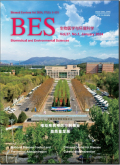Association between Organochlorine Exposures and Lung Functions Modified by Thyroid Hormones and Mediated by Inflammatory Factors among Healthy Older Adults
摘要Objective To examine the mechanistic of organochlorine-associated changes in lung function.Methods This study investigated 76 healthy older adults in Jinan,Shandong Province,over a five-month period.Personal exposure to organochlorines was quantified using wearable passive samplers,while inflammatory factors and thyroid hormones were analyzed from blood samples.Participants'lung function was evaluated.After stratifying participants according to their thyroid hormone levels,we analyzed the differential effects of organochlorine exposure on lung function and inflammatory factors across the low and high thyroid hormone groups.Mediation analysis was further conducted to elucidate the relationships among organochlorine exposures,inflammatory factors,and lung function.Results Bis(2-chloro-1-methylethyl)ether(BCIE),was negatively associated with forced vital capacity(FVC,-2.05%,95%CI:-3.11%to-0.97%),and associated with changes in inflammatory factors such as interleukin(IL)-2,IL-7,IL-8,and IL-13 in the low thyroid hormone group.The mediation analysis indicated a mediating effect of IL-2(15.63%,95%CI:0.91%to 44.64%)and IL-13(13.94%,95%CI:0.52%to 41.07%)in the association between BCIE exposure and FVC.Conclusion Lung function and inflammatory factors exhibited an increased sensitivity to organochlorine exposure at lower thyroid hormone levels,with inflammatory factors potentially mediating the adverse effects of organochlorines on lung function.
更多相关知识
- 浏览0
- 被引0
- 下载0


相似文献
- 中文期刊
- 外文期刊
- 学位论文
- 会议论文



 换一批
换一批 换一批
换一批



